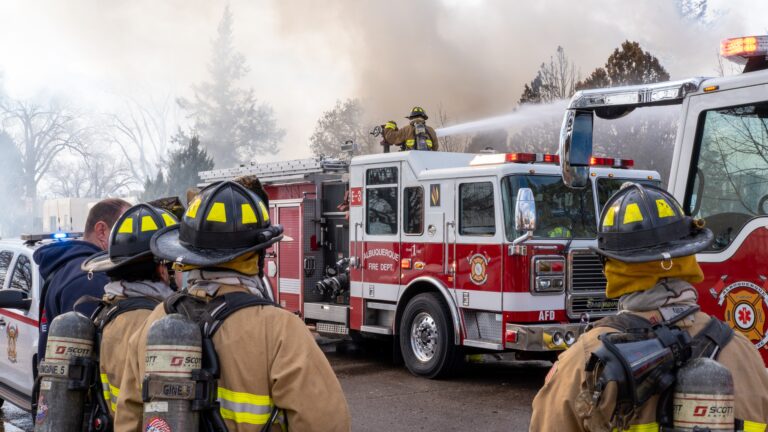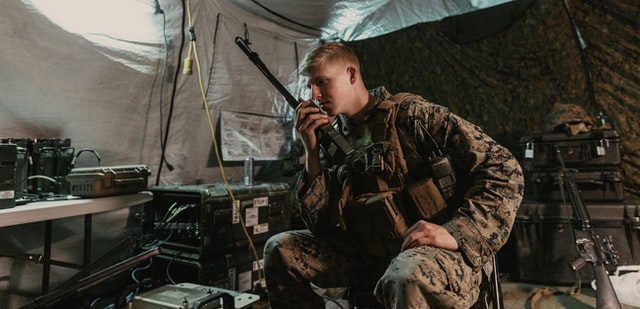Command Vehicle Design: The Most Important Capability
Command Vehicle Design: Your Most Important Capability
When lives are on the line, Command Vehicle Design means getting it right. During a critical incident or disaster, you need dependable communications. Moreover, your responders need the ability to communicate in the first hours. Dependable communications is critical for controlling and managing events. The closer and faster you get communications to the main scene, the better. Rapid and effective command communications is the enabler that saves lives.
Mobile Command Vehicles are used by government agencies, at all levels. Federal agencies and local municipal agencies depend on Command Vehicles for incident response. Additionally, Command Vehicles are used by Non-Government and relief Organizations (NGOs) like the Red Cross. Many Command Vehicles have sophisticated systems for Command, Control and Communications. Command Vehicles are intended for rapid deployment under extreme conditions.
Command Vehicle Design: The Interior
Additionally, Command Vehicle Interiors have extensive features. Many vehicles have videoconferencing capabilities, conference facilities and creature comforts. Available features also include berthing facilities, bathrooms and kitchen facilities. Also common are large generator and power systems.
Command Vehicles come on many different platforms. This includes large trucks, vans and large RVs. The current trend favors large vehicles. The gold standard is heavy trucks with sophisticated features and systems.
Mobile Command Vehicles are highly customized. Vehicle integrators build vehicles to each agencies’ specifications. Moreover, since vehicles are highly customized, this process is lengthy. From time of order, it typically takes 1-2 years for delivery.
Command Vehicle Design and Cost
Generally, the larger the vehicle, the greater the options and features. Command Vehicles can cost $1,000,000 or more. Additionally, there are significant life-cycle costs. Many owners spend several hundred thousand dollars per year to operate their vehicles. The main cost driver with Command Vehicles isn’t command communications, or mission systems. Rather, it is now the vehicle itself.
Deciding whether a Mobile Command Center makes sense for your agency? Also see, “Is A Mobile Command Center Worth It?”.
Command Vehicle Design: Early Influences
Command vehicles are a common communication strategy. For restoring communications during a disaster, Command Vehicles are widely used. Command Vehicles became prevalent in the 1950s/1960s. Back then, vehicles were mainly used for mobile communications.
The main goal was for providing back-up emergency communications. Additionally, Command Vehicles placed communications closer to critical incidents. Early responders emphasized emergency communications above all other capabilities.
Command Vehicle Design Capability vs. Complexity
Over time technology advanced. Emergency communications systems became much smaller. With these advances, other features were added. As a result, Command Vehicles became more complex. Modern day Command Vehicles have capabilities going far beyond original mission intent.
Today’s Command Vehicles have many luxury features. However, these features come at a significant cost. These costly features add little to actual mission capability. In contrast, earlier vehicles had bulkier communications systems. Due to necessity, early emergency responders couldn’t have anything beyond core communications.
As a result, over time, we lost communications as the main focal point. The main purpose to deliver rapid communications became diluted. Consequently, today’s vehicles are hyper versions of their predecessors. Given their complexity, modern Command Vehicles are often unable to deploy in the first hours of a disaster or large scale critical incident. These extra features hamper rapid deployment capability.
Command Vehicle Design: Mission Impact
This complexity needs greater power to run the additional systems. Modern Command Vehicles require highly trained staff to maintain and operate them. This runs contrary to what is most needed during disasters or critical incidents. During a disaster or critical incident, simpler systems are more reliable.
Best Model for Command Communications
There is a better option. You can have a Command Vehicle’s communications capability at a much lower cost. This system is ideal for rapid deployment. It’s easy to compare this other option.
The military uses the best model for rapid Command Communications and Command Vehicle Design. Military leaders fully understand logistically light, rapidly deployable communications. They know communication capability is needed most for critical command and control.
For example, the military uses Tactical Communication Systems that are highly capable and logistically light. Military Tactical Systems rapidly deliver command communications anywhere. These systems are easily deployed to the operational nerve center in near immediate time. Tactical Communications are portable systems best suited for rapidly shifting conditions. They operate under the worst and most extreme conditions. These are the types of systems we need.
Military and Command Vehicles
Within the military, whether a vehicle is used at all is secondary to communications capability. You rarely see the military using semi-truck or RV style command vehicles for “first on scene”, communications. Why? The military knows vehicles are logistically heavy.
Moreover, they know they are not best for rapid deployment. Military tactical communications systems are portable and modular. These systems can be rapidly deployed in real time. They operate anywhere and can be hand carried or placed in any structure, tent or vehicle.
Command Vehicle Challenges
The reason we have Command Vehicles is for near immediate communications. Rapid command communications delivery to a critical incident hot spot is the reason for these vehicles. However, in many conditions, they are unable to be rapidly deployed in the first critical hours. In many instances, their size and complexity make them difficult to rapidly deploy. This often happens just you need them most.
To summarize, Command Vehicles:
1. Require highly trained staff to deploy and operate. This staff may have training gaps. They may need to be recalled creating delays.
2. Depend on working infrastructure including roads and power. In many cases, this includes the infrastructure that is compromised.
3. Need significant logistical support. This includes power, fuel and staff. This is especially true for sustained operations.
4. Have a history of failing to get to disaster areas quick enough. Moreover, vehicles often take significant time to become fully operational.
Emergency Radio Communications: The Core Function
By removing the vehicle from the equation we gain flexibility. As a result, we can have rapidly deployable emergency communications without overhead. What type of communications? We need logistically light and simple communications systems. As such, they should use with low power and be easy to operate.
The ideal system:
1. Does not require network connectivity or grid power for operation.
2. Doesn’t require large amounts of power or bandwidth
3. Is simple to set up and operate
4. Can deploy within the first hours.
You need a Tactical System. The SemperComm® Portable Command Center (PCC) is a tactical system. Moreover, the SemperComm® PCC is the only system that provides the essential emergency communications you need. Our PCC provides Command Vehicle capability without heavy logistics. The SemperComm Portable Command Center is easy to rapidly deploy in any situation. In short, you will have Command Vehicle capability in a smaller tactically nimble package at lower cost.

You can have a Mobile Command Center’s capabilities without the overhead and cost.


We have the solution.

In an extended emergency or disaster it is understood that the first 72-hour window is when you as a responder have the greatest opportunities to minimize impact and save lives. Are you prepared?

For information or questions about how to turn any vehicle into a command center
To learn more about SemperComm® or for sales or questions, contact us.
About SemperComm® (“Always Communications”)
SemperComm’s Portable Command Center is the only system available today that does not need any infrastructure in order to operate and provides all the mission critical capabilities above. You can learn more about our patented Portable Command Center Here.
SemperComm® Systems is an Emergency Management consulting firm that provides emergency management services and emergency communications products. To learn more about how SemperComm® can meet your needs contact us.
